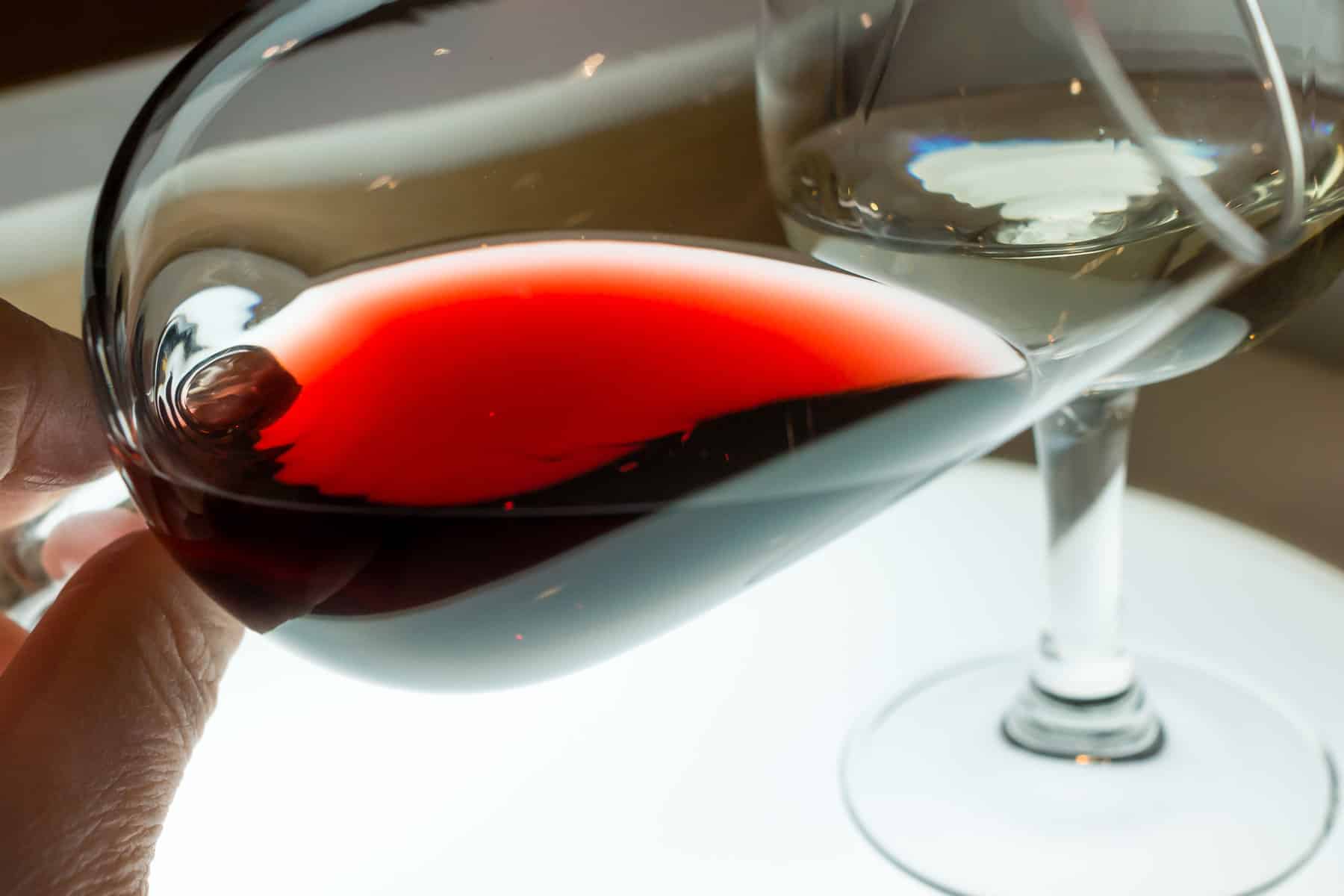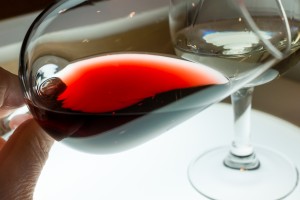We have all been there. You are in a fine restaurant with a good looking date (in some cases your spouse), and the waiter or steward presents you with a wine list. It may be a small card. It may be the size of a book. What do you do? Many folks in this situation will punt by picking a wine at random from the middle of a list without any regard to what the wine is, who made it, or whether or not it will blend with the food you are ordering. Sound familiar?
No need to worry. Here is a bluffer’s guide to ordering from a wine list and how to look good while doing it. Ready? Here we go.
Choosing the bottle.
Pairing wine with food.
Ok. You have just sat down and been handed a Wine List. It is okay to peruse it, but don’t make any firm decisions until you choose your meal. Don’t get nervous if you haven’t heard of most of the wines. You can always ask your server/wine steward for advice. However, you don’t have to pick the most or least expensive wines on the list. Those two items are there for exactly that purpose: to have a cheap and an expensive wine to present to their customers. You are looking somewhere in the middle for something you might like.
Here are some hints. Choose wines from France or California, especially if you have heard of the region. Such places have been making premium wines since before your grandparents were born. But you need to pair it with your meal. Choose your entrées first, then attack the list for complementary choices.
Popular wisdom says that red wine goes with red meat and heavy courses, while white wine is best paired with lighter meals (fish, chicken, poultry). That is partially true, but not in every case. Wine is what you like. If you like white wine with red meat, please have it. Beaujolais (a light red wine) is quite good with turkey. Try not to order red wine with fish. The oils don’t mix well with the tannins. Plus, it makes you look un-knowledgeable. James Bond was able to spot an imposter in From Russia with Love this way. Check out the scene sometime. Zinfandel is as light as wine gets. It’s the Coca-Cola of wine. Boone’s Farm (made by Gallo) was marketed as a Gateway drug to move “younger people” toward vintage dated wines. It worked.
Another helpful tip: the Sonoma Valley is the smallest of California’s wine growing regions. All of their wine is made from the same grapes. The differences in taste are due solely to the winemaking. You are not going to get a bad bottle. Conversely, the Napa Valley is the largest wine growing region of California. There is lots of variety, both good and bad, so the taste is all over the place.
“Don’t buy Napa. They don’t make Wine. Napa makes Auto Parts.”—Tommy Smothers (entertainer, Sonoma Wine Maker).
Bottle Presentation.
You have made a wine selection. Mazel Tov. The waiter brings a bottle to the table for your perusal. They present it to you. Assuming the label says it is what you selected, you nod your head, and the bottle is opened. Here we go.
Examining the cork.
This is your first clue as to the condition of your wine. Examine it. Squeeze it. Don’t smell it (that’s from a Columbo episode). If the cork is moist and firm, you have the desired bottle. If the cork is dry and/or crumbles, this is a warning sign that the wine has been exposed to heat or was stored in an upright position. If there is no cork but a screw off cap, not to worry. California vintners discovered decades ago they could preserve 10% more of their wine bottles with screw off caps than use inferior corks. Women’s shoe styles change regularly, and high quality cork is employed from time to time with fashion changes. Remember Candies? Their popularity (and demand for cork heels) actually caused deterioration in the quality of California wines during the 1970s. When Candies came back in fashion two decades ago, wine makers were prepared, and the screw off cap (for table wines to be opened within three years) re-emerged.
Assessing the glass.
Have your server pour a small sample into your glass. Before you drink it, hold the glass up to the light. Swirl the glass to see how the consistency of the wine remains on the glass. A buttery Chardonnay will leave a slight film. A more acidic Sauvignon Blanc will fall back to the bottom. This looks good, but what it has to do with enjoying your wine has more to do with showmanship than the taste. Relish it. It’s part of your job as a wine connoisseur. Besides, it’s fun.
Sniffing the aroma.
Don’t drink yet. Now, look down at the glass of wine and take a sniff at the “nose” of the wine. No need to stick your nose into the glass. It’s not an inhaler. Just sniff gently. What does it smell like? Can you denote hints of cherries or oak? Enjoy the experience. Keep the suspense going.
Tasting the sample.
Ok. Now. Swill the wine around a few times in the glass, put it up to your mouth and take a sip. Slurp a little to help the wine mix with air. This will help change the taste, because freshly opened wine has not yet had time to breath with air and can feel very acidic in your mouth. That will change over time within the glass.
The opinion.
You have squeezed the cork, swirled the glass, held it up to the light, and now slurped. Everyone is looking at you for your opinion. It you like it, tell your server so. Give them The Head Nod to signal it is okay to serve the rest of the table. If you don’t like it, and it tastes awful, don’t be afraid to send it back. Bad bottles happen as do good ones. Here are some favorite wine opinions overheard from recent years.
A) “It’s Approachable.” I have no idea what this means and neither does anyone else. But makes you appear very smart. A smart aleck may respond with “Yes, but from which direction?” (per Groucho Marx).
B) “A Mellifluous Experience.” This should be made with a big smile on your face as if to say that you know something they do not. Use it to your advantage and have fun having them guess. They will want to try the wine now.
C) “I wouldn’t be embalmed in It.” This was overheard at a DC rooftop restaurant some years ago from a woman tasting a wine for an upcoming wedding. I have never forgotten it. Expect that the wine in question was highly acidic and/or tasted like one would imagine formaldehyde. Don’t think they served that wine at that particular wedding.
Which brings up the final tip:
Don’t be afraid to send it back.
The wine may be bad, but you are afraid to admit that you don’t know good wine from bad wine. You do! You also know whether it tastes good to you or not. Here is what often happens. Months ago, some friends and my date were having fish at a top Virginia Beach restaurant. I was asked to pick a wine. Cheese featured in three first courses, and so I ordered a bottle of Muscadet, a crisp, tart French wine that pairs well with fish and cheese. Or so I thought. After going through all the motions from examining the bottle to The Head Nod and pour out, it was apparent by the end of dinner that no one had chosen a second glass. It was only after dinner on the way out that the guests all admitted they didn’t like the taste but didn’t want to say anything for fear of being thought unsophisticated. As a result, they suffered through a bad wine experience. If you don’t like it, send it back.
HAVE FUN.
Drinking wine is about enjoyment. It is a beverage to be sipped, and paired with other tastes, all for the experience of the diners. There is no reason to drink anything you don’t like, so don’t stand on ceremony. If you like the wine, make a note (or take a pic) of the label. Order it again. Share it with friends. Experiment with wines you don’t know. Above all have fun, enjoying the theatre and bravado that is wine tasting.
Bon appetite!
Ted Kaufman


